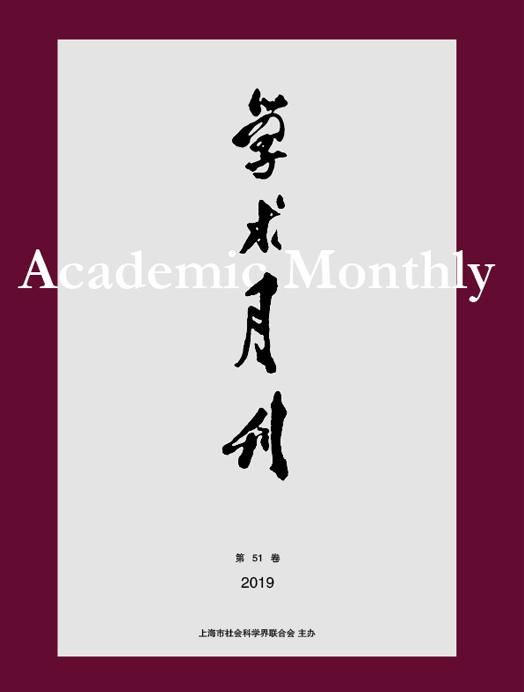Citation:
Sheng LI. The Civil-Military Relation in the American Constitutional System: Traditions and Transitions[J]. Academic Monthly, 2018, 50(12): 86-96.

The Civil-Military Relation in the American Constitutional System: Traditions and Transitions
-
Abstract
Based on the basic goal of ensuring the balance between national military security and the stability of democratic system, under the leadership of the Federalists, the U.S. Constitution established the system of civilian control over military forces. As the basic structure of civil-military relation in the United States constitutional system, there is a multi-dimensional decentralization between the legislative power and executive power, federal and state, standing army and militia. With the development of military and politics, the static constitutional rules structure was changed by a dynamic game. The Standing Army has been strengthened, while the militia has transformed from a traditional military force that embodies the spirit of republic into another form of standing army in essence, thus reshaping the substantive meaning of the militia clause in the Constitution. In the course of the game between the administrative power and the legislative power, the administrative power has been expanded to be a stronger and more complete power to command the military forces, which has also reshaped the decentralization clause of the Constitution. In contemporary society, the development of military professionalism leads to the homogenization of civil servants and military elites, who are better at dealing with political problems. At the same time, the conflict of civilizations in a pluralistic society strengthens the political significance of military action and promotes the conservatism of social ideology. These two factors have further led to strengthened the political character of military force and changed the traditional civil-military relation. It is the reasons why the Trump administration has shown a new tendency in the civil-military relation that the influence of military forces on politics has been more prominent.
-

-
References
-
Access
-
-
[1]
Yonghua LIU
, Yufan SUN
. The Structure of Relational Presentism. Academic Monthly,
2023, 55(3): 126-139.
-
[2]
Qingjie WANG
. Peirce and the Start of the “Philosophy from USA”. Academic Monthly,
2022, 54(3): 48-57.
-
[3]
Guojun XIA
. Naturalist and Anti-naturalist Fractals of American Philosophical Holism. Academic Monthly,
2021, 53(10): 45-59.
-
[4]
Zhijun LI
. Buddhist Manipulation of Luoyang’s Spatial and Temporal Landscape in the Northern Wei Dynasty. Academic Monthly,
2020, 52(7): 155-170.
-
[5]
Jiewei LI
, Libin HAN
. Limiting Urban Population Scale Matters on Relieving Congestion. Academic Monthly,
2020, 52(2): 58-67.
-
[6]
Shao’an HUANG
. Trading Mechanism of Reproductive Rights under the Planned Quota System. Academic Monthly,
2020, 52(10): 32-40.
-
[7]
GUO Liang
. . Academic Monthly,
2018, 50(8): 104-113.
-
[8]
Yongpeng FAN
. The Origin and Essence of American System: From Corporation to State. Academic Monthly,
2020, 52(10): 62-76.
-
[9]
LIU Daosheng
. The Grassroots Administration and Officialgentry Relationship of Huizhou in Early Qing Dynasty. Academic Monthly,
2023, 55(7): 190-203.
-
[10]
. . Academic Monthly,
2018, 50(02): 58-69.
-
[11]
Nanzhi WEI
. Dynamics of Conflicts of Cultural Identity & Social Inequality in United States. Academic Monthly,
2021, 53(2): 85-96.
-
[12]
ZHANG Yifei
. A Critical Analysis of Evoluted American Strategic Thinking and Its Impact on the U.S.Hegemony. Academic Monthly,
2024, 56(3): 84-95.
-
[13]
Feian ZHANG
. Mirror Image of the Trump’s Era:A Study of Huntington’s Political Thought. Academic Monthly,
2020, 52(5): 87-101, 112.
-
[14]
,
. . Academic Monthly,
2017, 49(01): 92-103.
-
[15]
. . Academic Monthly,
2016, 48(09): 84-98.
-
[16]
Han LIU
. The External Dimension of Domestic Public Law: The Deep Logic of American Geopolitical Constitution. Academic Monthly,
2018, 50(12): 97-107.
-
[17]
Yongqian TU
, Ziyue LUO
, Xiafeng HU
. The Information Security Clearance System in Americaand Its Inspiration. Academic Monthly,
2019, 51(8): 65-77.
-
[18]
Kang LIU
. From Post-isms to Identity Politics: Reflections on American Humanities Today. Academic Monthly,
2020, 52(2): 129-141.
-
[19]
. . Academic Monthly,
2017, 49(01): 86-91.
-
[20]
Demin DUAN
. Reconsidering the Conflicts and Polarization in American Politics. Academic Monthly,
2021, 53(1): 93-102.
-
-



 沪公网安备 31010102003103号
沪公网安备 31010102003103号 DownLoad:
DownLoad: